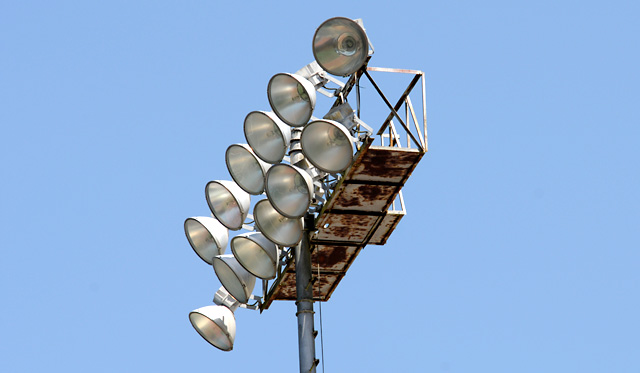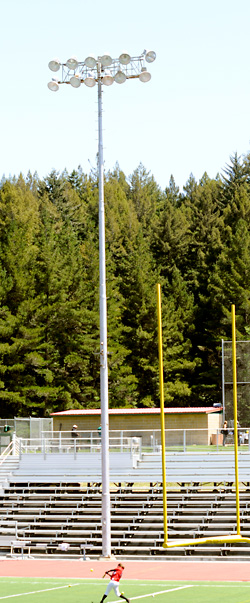
The proposal, named the Relight the Redwood Bowl project, will finance the purchase of new fixtures that focus light directly on to the field The number of lighting fixtures will drop by 40 percent. Green Campus estimates a savings of $186,221 and a reduction of 1,525,000 kilowatt-hours over a 25-year period.
“It’s going to be really amazing when everyone at every football game sees the impact of what we’re doing on campus,” says HEIF student manager Jeffrey Steuben.
Even community members absent from the games will notice a change. The new lighting system is guaranteed to reduce light spillage by 50 percent to the benefit of human and wildlife populations alike.

The idea for the Relight the Redwood Bowl project had been on the table for a long time, says Green Campus Coordinator Sarah Schneider, but a lack of funding left it to stagnate. With the inception of HEIF, Green Campus was able to leverage enough funding from HEIF and Plant Operations combined to turn the idea into reality. Green Campus is a state-wide, student-led energy efficiency outreach program under the Alliance to Save Energy.
HEIF is a student fee-based fund that finances student-designed energy production, efficiency and education projects. “Since its inception, HEIF has empowered students to make actual effective change on campus through energy-related projects,” says Schneider. “This program enables us to demonstrate our capacity for creativity and professionalism, while working toward institutionalizing sustainability and energy efficiency.”
Since 2008, HEIF has granted more than $260,000 to a variety of student-designed projects, including a solar photovoltaic array for the Old Music building, retrofits to the heating and ventilation system of the Science D and E buildings, two intern positions focused on building energy, and equipment for a solar radiation monitoring system on the library roof.
“Many students are getting great skills out of HEIF; they’re funding their own education and training as well as working to save the environment,” says Steuben.
Installation of the PV array and the retrofits to the HVAC system will also commence this summer, again by student interns under the contractor guidance.
The energy fund is a prime example of environmental responsibility and student initiative at HSU. Schneider points out that, “it also helps students connect with faculty, staff, and administrators in a more collaborative manner.”
Student HEIF committee member Nathan Chase says that HEIF “exemplifies the Humboldt student body’s ‘can do’ attitude and high professionalism.”
For more information, visit the Humboldt Energy Independence Fund and HSU’s Green Campus Program.